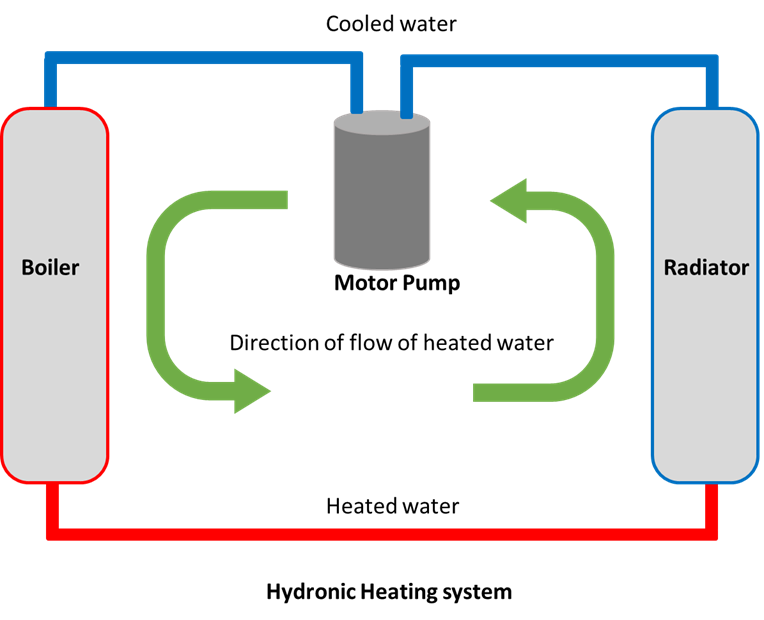Heating
20 Hydronic Heating Systems
Click play on the following audio player to listen along as you read this section.
One of the simplest methods of heating a room is to pass warmed water through pipes in that room. If the ambient temperature in that room is lower than that of the water in the pipes, they will release some of that stored heat energy. If the water did not move, it would quickly reach equilibrium with the room and no more heat transfer would occur. By constantly cycling fresh, warm water through the pipes, and carrying away the cooled water, an energy transfer can take place, with water as the medium that carries the energy.
This system would require an external heating source, such as a gas-fired boiler or an electric boiler to heat the water. Once the water has collected this stored thermal energy, it is then cycled through the system, transferring heat energy in the desired locations. Radiators are usually installed near windows and points of high heat loss to release the stored energy.

A material that can carry thermal energy from one place to another, such as air, water, or refrigerants.

